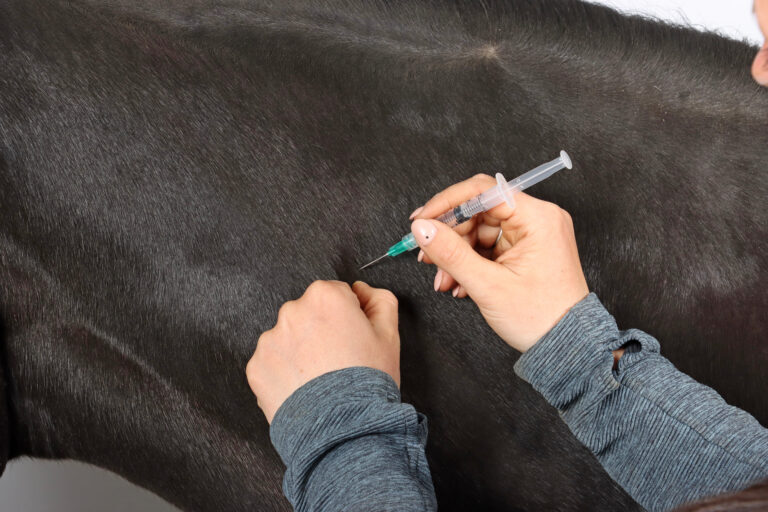Every equine veterinarian who has worked in a hospital can tell a tale of woe related to flooring, slippery floors, dangerous floors and floors that harbor dangerous biological agents. Today’s equine practices have to become more concerned about making the right choices about flooring.
It may not be the most exciting topic, but it’s the foundation of everything else: which flooring solutions work and don’t work in equine hospitals. Building the proper foundation will enable us to focus on the other aspects of design, construction and practice management. This month we present a sensible approach to designing your concrete slab. In the next issue we’ll explore the best floor covering options. The ultimate goal is to help you build a better hospital from the floor up.
The Basics of Slabs
Concrete is concrete, right? No. On Jan. 24, 2012, “World of Concrete” kicked off its 38th annual conference in Las Vegas. More than 50,000 buyers attend from across the globe. By contrast, the attendance at AAEP in 2011 was about 3,500. Concrete is an overwhelmingly HUGE industry, with very sophisticated science and technology. What do you need to know to make the best decisions about your simple concrete slab? Here is a step-by-step how-to:
Start with a vapor barrier. Research has demonstrated that the thin polyethylene plastic sheets that are traditionally placed underneath slabs degrade over time and don’t do anything to prevent the migration of moisture from the soil below. The vapor pressure from under-slab moisture along with the high pH content of water that rises through a slab is enough to cause the failure of seamless flooring systems. The best way to prevent this is to place a 15 mil. Class A polyolefin vapor barrier directly underneath the slab. This type of plastic will not degrade over time, and the thickness gives you the puncture resistance and the permeability rating that is required for optimum performance. The vapor barrier needs to be installed with all seams and penetrations fully sealed.
Specify the right concrete mix. A huge shakeup in the flooring industry has occurred in the last 10 years, resulting from repeated failures of seamless flooring systems. Without going into tedious detail, take our word for it that flooring manufacturers protect themselves by requiring that concrete slabs dry out enough to achieve a specific moisture content prior to the application of seamless flooring products. This seems reasonable until you understand that the moisture content that is typically required is one that is difficult to reach within a normal construction schedule. The best way to prevent this annoying and potentially expensive problem is to use a concrete mix that has less water. A concrete mix that has a water/cement ratio of .45 and achieves 4,000 pounds per square inch of compressive strength will be much less trouble for you and your project than a more typical, wetter mix.
Understand the limitations of texture. As you are aware, horses have a difficult time standing safely on hard surfaces, and almost all concrete and asphalt surfaces are too slick, especially for horses that are already stressed. Once a horse begins to lose his footing, he will be even more prone to spooking. The decisions that you make in the beginning regarding the texture of your concrete floor slab will affect you tremendously in the long run. If you plan to expose your concrete slabs, follow these guidelines:
• Have your architect specify a broom finish texture. This is a little rougher than a troweled finish, and is literally achieved by sweeping a broom over the concrete before it sets.
Resist the temptation to further increase the level of texture. Many people make this mistake. The problem is that a horse hoof or shoe has a very small surface area for the amount of weight that’s being supported. A highly textured slab will decrease the surface area between the horse’s hoof and the slab, which makes slipping more likely.
• Create a cleanable slab. Concrete is porous. If you are concerned about biological risk in your hospital, the slab should be covered. However, you may not be able to afford to install seamless flooring. Even if you were planning to install it in some areas, there will be other locations where a concrete slab is the most effective solution.
Here are some tips for creating the most sanitary condition, given the limitations:
• Slope the concrete properly. If you plan to hose your concrete floors, design them to slope gently toward drains. This will prevent chasing dirt around with a hose. Do not exceed ¼” per foot of slope for reasons of safety.
• Prevent cracks. Concrete cracks. Given that fact, there are some things you can do to minimize cracking, including slab reinforcement, curing methods and preventative saw-cut joints called “control joints.” Discuss your concern about cracking with your design professionals to explore prevention measures that will fit within your budget.
• Seal cracks properly. Seal the inevitable cracks and joints with high performance urethane sealants. This will create a more sanitary floor.
Apply a penetrating sealer on top of the slab. The right sealer will create a less porous and more cleanable surface. Note: These sealers need to be re-applied yearly.
It may be true that concrete is a tedious subject, but the slab you depend upon to keep your clients and patients safe is one of the most important surfaces in your hospital. Even if you plan to cover your slab, the performance of your flooring systems still depends on the concrete beneath. You may not be attending “World of Concrete,” but I hope you will start your own concrete discussion with your team the next time you plan to build or remodel.
Heather E. Lewis, AIA, NCARB, is a principal of Animal Arts, an architectural firm that has exclusively designed animal hospitals and animal-care facilities since 1979.




